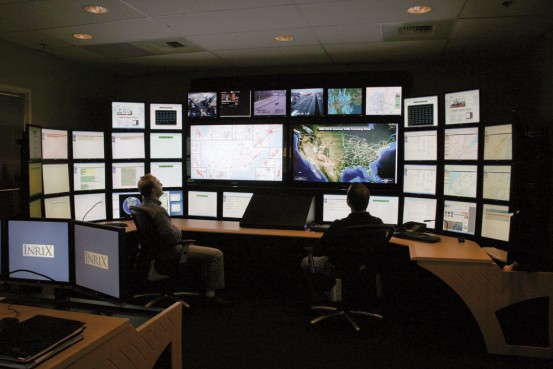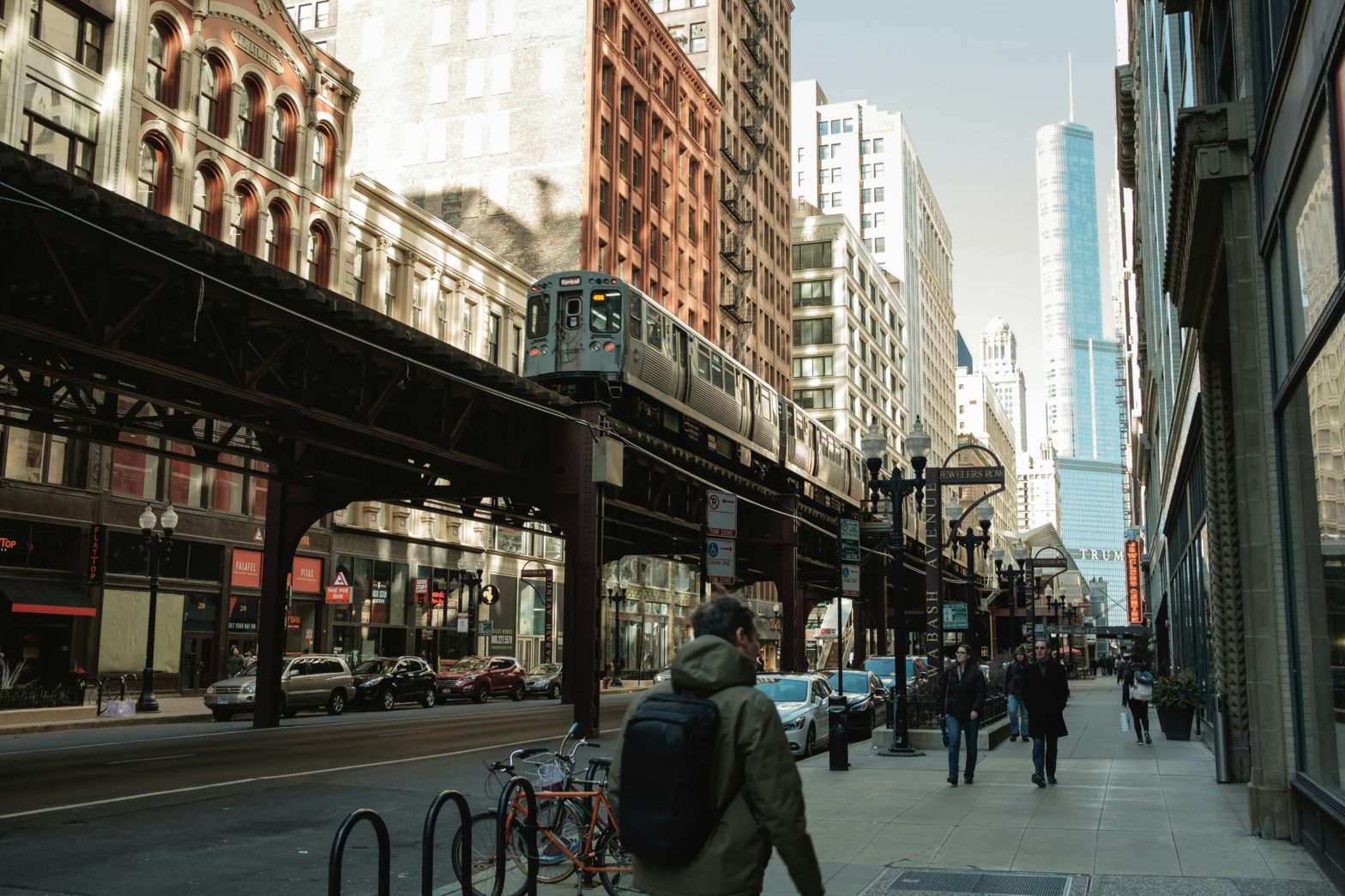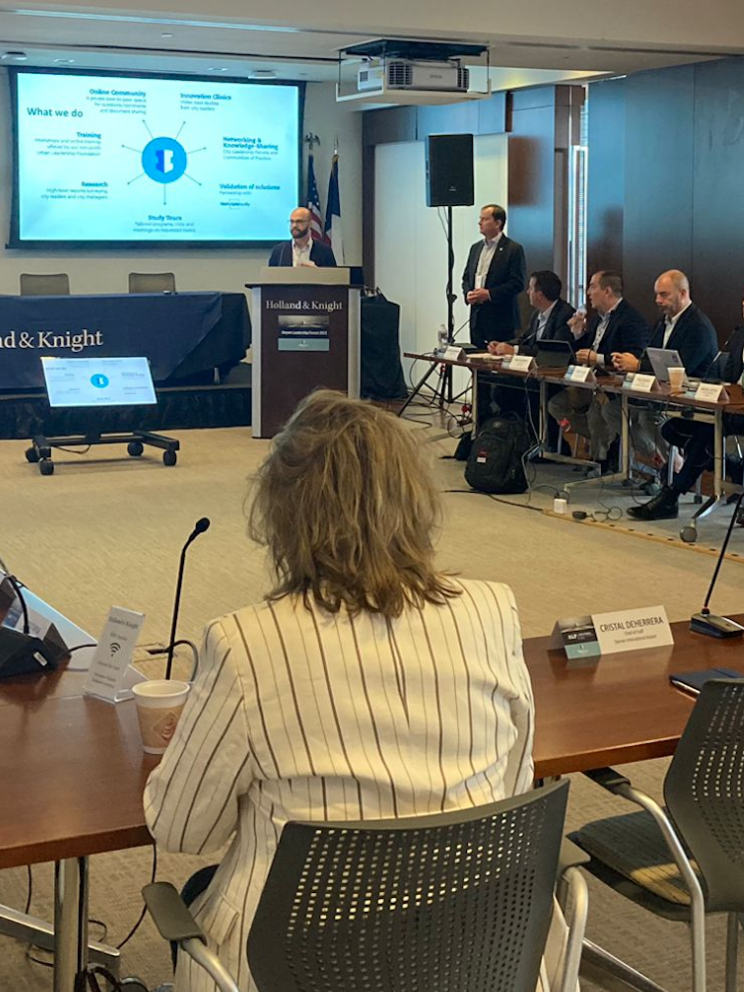
Photo: Traffic-WEB-553×369
An intelligent approach to traffic management
18 September 2012
by Richard Forster
Urbanisation is increasing the population in cities at a rate that outpaces their ability to develop the necessary transport infrastructure. Nick Michell reveals how intelligent transport systems can help cities deal with the increasing demands by measuring, monitoring and managing transport operations in real time
Cities are now realising that efficient transport systems are a key ingredient to economic growth with governments across the world looking into smarter mobility solutions to address the complex traffic issues that cities have to deal with. Smarter transport recognises that there is a shift from transport operators knowing and reacting to situations, to anticipating and avoiding them. Intelligent transport systems attempt to integrate and interconnect information from multiple government departments and public agencies to enhance city safety and reduce congestion.
“Clearly, we cannot build our way out of congestion by adding more roads,” says Jim Bak, INRIX Director of Community Relations, a leading-provider of traffic information, directions and driver services based in Kirkland in the US. “Just as we efficiently route data across our IT networks, similarly we can route people and commerce across our transport networks. It starts with knowing what’s happening on the roads, not just the major motorways but the secondary roads in the cities as well. INRIX helps governments by filling the gaps in their sensor networks giving them a more complete view of what’s happening on the road network in real-time.”
Smarter transport provides traffic analysis and prediction capabilities and a comprehensive and scalable platform for traffic management solutions, helping cities reduce traffic congestion, improve incident response and traffic flow, and pro-actively manage traffic conditions.
“While new infrastructure is of course important, it needs new intelligent software and technology to keep transport systems running efficiently,” says David Pickeral, IBM Global Development Executive of Intelligent Transport. “IBM is helping transport officials and Transport Management Centre (TMC) operators gather and analyse transport data so they can anticipate and avoid issues rather than just responding once an incident occurs. With that, there are new insights and decision support to all levels of transport and city officials, as well as individual commuters.”
Intelligent transport systems can increase situational awareness across an entire transport network, enabling cities to predict traffic speed and volume up to an hour into the future. New software and technology is helping transport agencies analyse historical data to understand patterns of behaviour of traffic and road incidents, while centrally managing traffic operations and traffic event information collected across geographical locations.
IBM’s Intelligent Operations Center (IOC) for Smarter Cities provides a unified view of all city agencies so that cities can predict events and quickly respond. The IOC software allows cities to recognise events as they arise and put responses in place to better manage the impacts.
Following a series of floods and mudslides that claimed the lives of nearly 100 people in April 2010, the City of Rio de Janeiro announced a significant overhaul of its city operations. Mayor Eduardo Paes, turned to IBM to provide the platform, through their Intelligent Operations Center software, and help design what would become the Rio Operations Center in Cidade Nova. With less than a year before the next rainy season, they had to act quickly and in just six short weeks, they had a technological and physical blueprint in hand and construction began on the operations centre, which then opened at the end of 2010.
“The centre connects and integrates information from over 30 government departments and public agencies in the municipality to improve city safety and responsiveness to various types of incidents, including locally critical flash floods and landslides,” explains Pickeral. “Prior to the operations centre, the city did not have a way to monitor emergency situations or oversee a coordinated response. With the 2014 World Cup and 2016 Summer Olympics on the horizon, the mayor sought a more centralised command centre to predict and prepare for extreme weather, traffic related problems and other public safety issues.”
Better journey planning
While it is very important for transport agencies to not only respond faster when accidents and incidents occur on the network but to also better understand the scope of the challenges in a given area and prioritise their importance in applying resources to address them. Another significant aspect to an intelligent transport system is to deliver improved information to drivers that help them better plan their trips. Using alternative routes that more equally distribute vehicles across the road network makes travel easier and more convenient for citizens.
“With better information on more roads, navigation systems can provide better alternative routes when traffic congestion occurs, factoring in conditions on the motorways as well as the secondary routes,” says Jim Bak. “This creates routes that can use more of the infrastructure available to route drivers to their destination in the least amount of time. Less time in traffic equals less fuel consumption and less pollution, not to mention helping drivers and fleets spend less money on fuel.”

INRIX analyses real-time traffic flow data from nearly 100 million vehicles travelling the roads every day. These vehicles are a mix of commercial fleet vehicles like delivery vans, long haul trucks and taxis that report back their location, heading and speed every minute of every hour they are on the road, as well as consumer vehicles with two-way connected GPS navigation systems. INRIX additionally gets information from consumers who are using various smartphone navigation apps as well as their INRIX Traffic app during their daily commute. The importance of the use of data to determine traffic flows from not just road sensors or CCTV cameras but also from the actual drivers and their mobile devices is crucial.
“Smartphone apps can be incredibly helpful with early detection of incidents or accidents,” explains Bak. “If you think about where incident information originates from today, it often comes from someone who calls emergency services for help when they witness an incident or are a part of one themselves. Mobile apps like INRIX Traffic allow users with just two taps on their device to report an incident to us, which we can then publish immediately to our community of other app users.” By eliminating the processing time from call to code to deliver to transport agencies, the potential exists to speed up emergency response thus saving lives and returning traffic flows to normal as well as enabling the reopening of roads quickly following an incident.
Challenges
Every day, cities around the world face emergencies that require real-time communication and collaboration across departments and agencies. Unfortunately, critical information is often stored in multiple disparate systems. This hinders situation awareness and makes it difficult for various departments to coordinate response efforts. A city might not be able to warn residents of danger or rescue people quickly without a single, integrated view of a crisis and the ability to share information.
Géraud Boursin, Director of Digital Services at Veolia Transdev, which has collaborated with IBM to develop a smarter mobility solution designed to help cities alleviate road congestion, emphasises that cross-agency collaboration requires a significant amount of leadership and co-operation.
“It is essential to obtain reliable real time data sources from all transport operators for a first level of smarter mobility focusing on passenger information,” says Boursin. “This is the reason why the involvement of local authorities is essential in this project. A smart mobility solution creates connections between different actors who often report to different jurisdictions. A key success factor is to identify one of the jurisdictions to take the leadership and attract other actors onto the project.”
Smarter transport can drive economic vitality and improve people’s quality of life. It can be more efficient, provide better service to customers and constituents, protect the environment and help assure safety and security. Intelligent transport systems can enable cities to anticipate and avoid situations rather than just knowing and responding to them, improve safety and responsiveness to natural disasters and deliver improved information to drivers for better-planned journeys.
“Breakthroughs in applications of big data in transport have incredible potential to help us better distribute traffic across our road networks, optimising the use of our existing infrastructure, not to mention improve our ability to manage, measure and plan our future transport systems whether it’s by car, train, bus or ferry,” says Bak. “Transport agencies improve daily operations and when they invest in our transport systems in terms of both roads and transit as well as carmakers, they can deliver insight that helps drivers always find the best way to go.”









